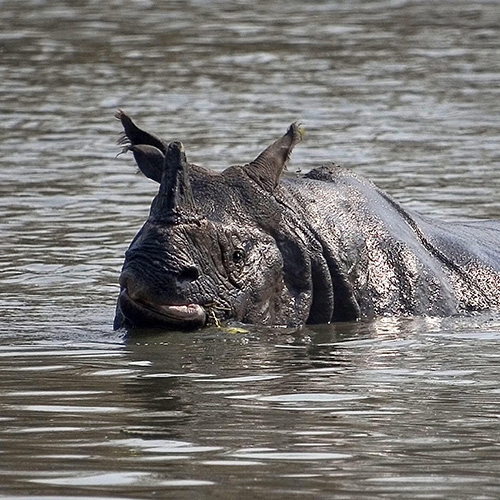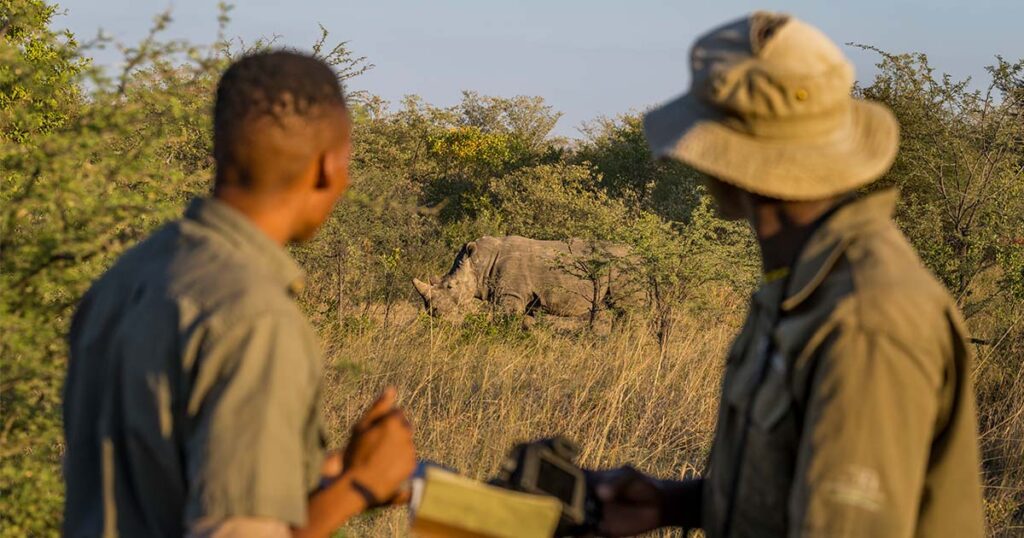The Leuser Ecosystem is the last place on Earth where orangutans, elephants, tigers and rhinos coexist in the wild. This landscape spans over 6 million acres and houses the largest intact forest remaining on the island of Sumatra. IRF provides funding to local organization Forum Konservasi Leuser (FKL) to help operate two rhino-focused Wildlife Protection Teams (WPTs), four-person units that continuously patrol rhino habitat in Western Leuser. The WPTs patrol the area looking for signs of endangered wildlife including the last remaining wild population of Sumatran rhinos.
In 2024, the teams recorded signs of Sumatran rhinos primarily identified through feces, friction marks, active wallowing holes, or nests. They also recorded signs of Sumatran elephants, tigers and orangutans. These patrols are designed to not only monitor the wildlife but also intercept illegal activity such as poaching. The teams dismantled 14 snares and destroyed 5 poacher camps, although they did not encounter any poachers during their patrols.
Unfortunately, rhinos are not the only species affected by devastating numbers of poaching incidents. Sumatran orangutans are also a critically endangered species. Recently however, FKL had a major win against Orangutan poaching:
“Tezar Pahlevie, the coordinator for the Investigation and Law Enforcement division in FKL, emerged as a hero in September 2023 when he played a central role in thwarting the international illegal trade of Sumatran orangutans in Medan, North Sumatra. Despite facing significant risks, Tezar fearlessly employed innovative investigation techniques to infiltrate the illegal wildlife trade network. His daring actions led to the successful interception of smuggled orangutans, ultimately dismantling the illicit operation.
The intervention resulted in key information to reveal illegal wildlife trade network (local and international) in Leuser Ecosystem, Aceh province. Tezar’s unwavering determination and willingness to confront danger head-on highlight his remarkable dedication to wildlife conservation. His heroic act not only saved the lives of these endangered wildlife but also sent a powerful message against wildlife trafficking. Tezar’s bravery and commitment serve as a shining example of the courageous efforts made by individuals in safeguarding our natural world,” recounted FKL.

Images courtesy of Forum Konservasi Leuser

The success of Tezar and FKL’s dismantling of the orangutan smuggling operation is a significant step forward in the fight against rhino horn crime. The overlap in networks involved in various forms of illegal wildlife trade means that disrupting one operation can have a ripple effect across others. By weakening the criminal infrastructure that supports activities like orangutan smuggling, we simultaneously undermine the networks that fuel rhino poaching. This holistic approach not only protects rhinos but also contributes to the broader effort to preserve biodiversity and bring an end to the exploitation of our planet’s most vulnerable species.








